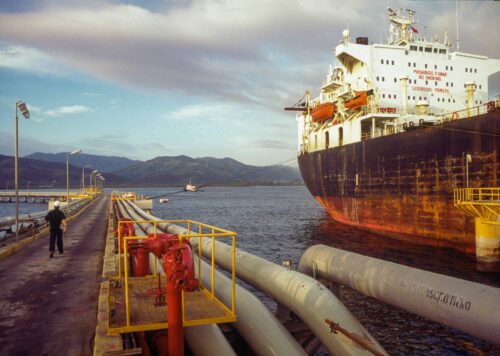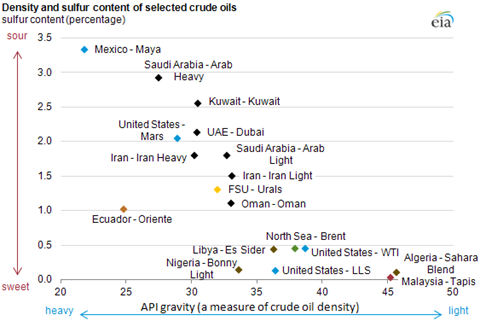
EU’s Russian Oil Curtain Call: A Crossroads for Climate
Europe needs to accelerate the build-out of its clean energy infrastructure to reduce oil demand. Until then, Europe’s phaseout of Russian oil supply introduces opportunities to reduce supply-side emissions and shift oil prices closer to their true climate cost. An analysis of the viable replacements for Russian oil imports shows that lower-emissions alternatives are available to the EU, but making the switch will not be as simple as dropping in one crude oil stream to replace another.
The global oil industry will need to retool to meet this new landscape and can profitably reduce emissions in the process. Governments and oil executives must support full supply-chain emissions visibility through these shifts, thinking through the lens of greenhouse gas (GHG) intensity to maximize financial and climate benefits. More climate-conscious decisions by EU refineries can lead the way.
Act 1: Disrupting 25 Percent of the EU Crude Oil Status Quo
The EU adopted broad sanctions on Russian oil that take effect by the end of 2022. Russia accounted for over 25 percent of 2021 EU oil imports across 2.2 million barrels per day (mbd) of crude and 1.2 mbd of refined products. The sanctions target a 90 percent reduction in Russian oil imports by year-end through the immediate phaseout of seaborne oil (nearly two-thirds of EU’s Russian imports) and eventual phaseouts of oil by pipeline, although the timing for the latter remains undetermined.
Intermission: Matching Low-Emissions Crude to the Right Refineries
Europe’s primary challenge is replacing Russian oil with sources that are chemically similar and competitively priced, and that also provide an opportunity to reduce the carbon footprint of fossil fuel supplies.
Refineries are specifically designed to process a narrow range of crude streams based on various characteristics. The most common defining properties affecting refinery operations are sulfur content and API gravity, or similar measurements of crude oil density. Half of Russia’s crude oil sales to the EU are in the form of Urals crude with roughly average properties (see Exhibit 1), while the other half are unspecified but are less dense and lower in sulfur. Among the top 10 most used crude oils, Urals crude, which comes from Russia’s oil fields in Western Siberia, is the most produced crude stream at nearly 10 mbd and has the highest upstream (oil well) CO2 intensity.
Exhibit 1: Key properties of crude oils by source
Source: US Energy Information Administration
The GHG emissions intensity of refining oil varies significantly based on how the crude oil was produced and the specific processes used at a refinery. The properties of oil gravity and sulfur content (pictured above) are not clearly correlated with a crude stream’s life-cycle GHGs. Some oil and gas are burned or directly released in the oil supply chain to make oil products like gasoline and jet fuel. Unfortunately, the oil market is not climate-differentiated — emissions intensity is not fully reflected in common crude oil properties or prices.
| Crude Oil by Production Field | Upstream Emissions Intensity (kg CO2e per barrel of oil equivalent) |
|---|---|
| Russia Urals | 115 |
| North Sea Brent | 581 |
| Iran Light | 223 |
| Oman (Castilla as Assay Proxy) | 283 |
| Libya Es Sider | 207 |
| US WTI (Eagle Ford Black Oil as Assay Proxy) | 195 |
| UAE Dubai | 78 |
| Kuwait | 70 |
| Saudi Arab Light | 80 |
Exhibit 2: Supply chain emissions for Russian Urals crude and chemically similar crude oils
Note: Emissions intensity in CO2 equivalent (CO2e) represents all greenhouse gas emissions (CO2, methane, etc.) as an equivalent mass of CO2 emissions. In this calculation, the equivalency is based on a 20-year global warming potential (GWP).
Source: Calculated with Stanford’s OPGEE Model, part of RMI’s OCI+ tool
Replacing Urals with European barrels like North Sea Brent could increase emissions. Brent emissions are quite high, as mature fields have high water and gas ratios that necessitate additional processing. On the other hand, crudes like Saudi Arab Light might be a good substitute for Urals, and emissions could be lower. EU customers can use new crude oil contract opportunities to drive emissions reductions from suppliers using methane leak reductions, flaring reductions, and increased renewable power use at wells.
Refineries can also blend some crudes to make a mix fitting their design properties while lowering emissions. For instance, refineries could blend lower-sulfur crudes from Africa and the United States with higher-sulfur crudes from the UAE, Saudi Arabia, and Kuwait, the latter of which produces crude oil with nearly 40 percent less upstream emissions than the average Russian barrel.
After sourcing the lowest-emissions crude oil, routing it to the simplest possible refinery can reduce emissions at the margin. Simpler hydro-skimming operations can produce less than half the refinery emissions of a refinery operating in a highly complex coking mode.
Exhibit 3: Breakdown of emissions by refinery type with 20-year GWP
Source: Calculated with University of Calgary PRELIM Refinery Model, part of RMI’s OCI+ tool
Act 2: Reducing Demand for Fossil Fuel Products and Dirty Assets
Pulling off successful crude oil switches will leave some demand gaps and inefficient refinery operations. Intermediate products from refineries can be used to fill some of this gap, using the front-end crude distillation process at non-EU refineries and various back-end refinery processes at EU refineries. These intermediate products can be untreated from refinery distillation units or cleaned up with hydrogen (hydrotreated) to remove sulfur and other impurities.
Choosing hydrotreated intermediates could reduce EU refinery hydrogen demand and the incremental Russian natural gas used to make it. EU refinery hydrotreating demand corresponds to nearly 10 percent of EU natural gas imports from Russia, or 25 percent of 2020 EU liquified natural gas imports. Resources saved from avoided natural gas demand and transparency on the true climate costs of all fuels can drive cleaner refinery investments toward green hydrogen, lower-temperature processes, electrified heating, and waste recycling opportunities.
This leaves the 1.2 mbd of refined oil product imports mentioned earlier, which are mostly diesel imports. Mitigating this reliance would ideally be managed through efficiency and electrification efforts to meet demand more cleanly. Until that happens, the EU would be wise to source finished oil products from the lowest-emission providers, supporting Europe’s own climate goals while leading global demand of low-emissions products within climate-differentiated markets.
The EU transformed its older refineries, transportation systems, and other industries into some of the most efficient in the world over the past few decades to combat high energy prices. Europe can again lead in reinventing its assets for a world needing lower emissions. RMI has tools in our Climate Intelligence Program to help.
